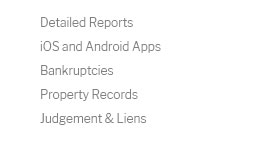 |
 |
|---|
|
|
|---|
 |
 |
 |
 |
|---|---|---|---|
 |
 |
 |
|
 |
|||
 |
 |
 |
|
 |
|||
 |
 |
 |
|
 |
|||

federal court public records explained for informed accessWhat these records includefederal court public records encompass dockets, filings, and written opinions that document how cases move through the judiciary. They help researchers, journalists, and businesses trace motions, deadlines, and outcomes, while revealing the reasoning behind decisions. Access is typically through online portals, law libraries, or courthouse terminals, with some materials sealed to protect privacy or national security. Pros and cons to considerPros: transparency, accountability, and a reliable trail for due diligence and compliance. Cons: costs, complexity, and context; raw filings can be technical, redactions may limit details, and not every exhibit is available.
For critical matters, confirm citations against official sources and, when necessary, ask the clerk’s office about certified copies to ensure accuracy.
|
|---|